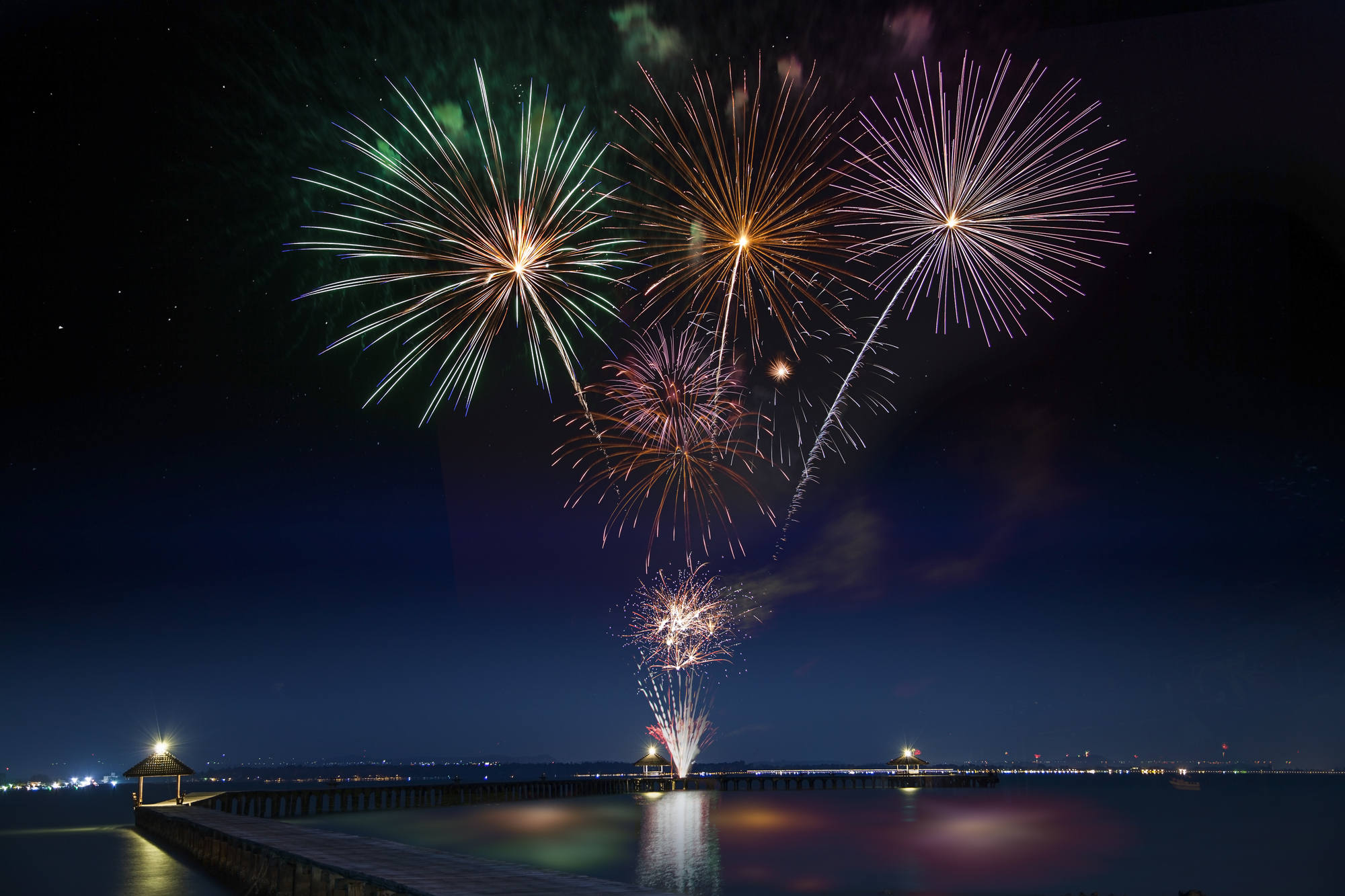

Astronauts on long missions aboard the International Space Station often spend their holidays peering down at Earth. But while they may be missing out on the festivities on the ground, some former crew members have reported seeing a spectacular sight that signals raucous celebrations are at hand: fireworks.
It’s unlikely that viewing fireworks—chemical explosions that create blasts of crackling sounds and dazzling colors—from space would be as mesmerizing as watching from your favorite picnic spot. The small sparklers waved by eager partygoers and bottle rockets shot off in their backyards aren’t putting on any light shows for astronauts flying overhead. But what about huge, bombastic industrial-type fireworks: Would even those be pinpricks of light to space travelers looking down at us?
In most cases, those combustions are too dim or too easily obscured by weather to be visible nearly 250 miles up, where the ISS resides in low-Earth orbit. And taking into consideration how much artificial light pollution inundates astronauts every night, successfully spotting sparks of glowing light far below isn’t a regular occurence.
Yet some lucky space visitors have reported they’ve glimpsed small, colorful dots firing over certain cities.
Former Canadian Space Agency astronaut Chris Hadfield, for instance, wrote on Twitter that with darkness and the right timing, fireworks can indeed barely be seen blinking in and out of view of the station’s windows. Andre Kuipers, a former European Space Agency astronaut, also recalled seeing fading red and green “light spots” over Warsaw, Poland, as his crew celebrated New Year’s in 2014.
The firework industry is also scaling up bigger than ever before. The largest aerial firework launched made the Guinness World Records in 2020, when an explosion turned the entire night sky in Steamboat Springs, Colorado, a bloody shade of scarlet. The fireworks’ spherical shell weighed in at about 2,800 pounds, and the humongous bomb had to be shot off from a mortar (a steel tube embedded in the ground) about 26 feet deep.
[Related: Babies and pets might freak out during fireworks shows, but you can help them relax]
Yet according to Paul Smith, director of lecture demonstrations at Purdue University, whether astronauts could see fireworks from space wouldn’t actually depend on the size of the shell. Instead, it’d come down to the light intensity, which means the strength of the radiance a source produces.
“The key thing is the intensity of the light output,” says Smith, who is also president of Pyrotechnics Guild International. So, for the brighter or more brilliant fireworks, Smith imagines that they could probably be seen from space. But if that light output is lacking in intensity, he says, “it really wouldn’t matter how big it is or how big the spread is, it’s just not going to send light far enough that they can visually pick it up.” It’s unknown whether anyone peeped the Steamboat Springs blast from as far above as the ISS. But if they did, even that record explosion probably looked nothing like what Earthlings on the ground saw: Instead, roaring red thunder would’ve been transformed into tiny flickering sparks.
The concept of intensity is also one of the reasons that certain firework colors, like reds and greens, are often more vivid than others, Smith says. But more important than creating an explosive scene for people in orbit, he notes, is improving how the people of Earth set off rockets at home.
Smith recommends that anyone looking to engage in pyrotechnic fun check out Celebrate Safely, an education initiative that demonstrates how to properly handle backyard fireworks and discourages their misuse. The goal is to decrease the number of yearly firework-related accidents; according to the Consumer Product Safety Commission, an estimated 11,500 people were taken to the emergency room for these types of injuries in 2021, and at least nine people died.
“We love fireworks and want to promote those, but we want people to understand: enjoy it, but do it safely,” says Smith. It’s nearly impossible for astronauts to appreciate your backyard fireworks–but a commemoration that doesn’t require medical attention is its own reward.

